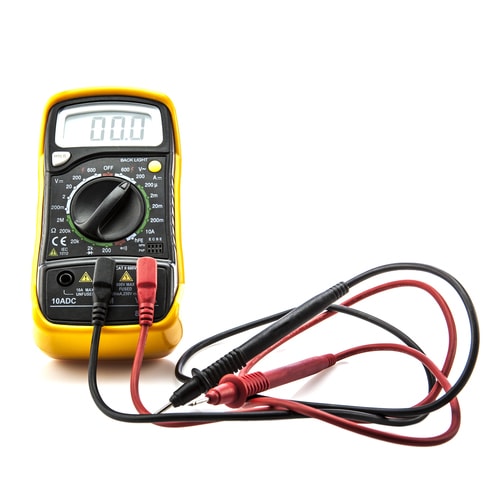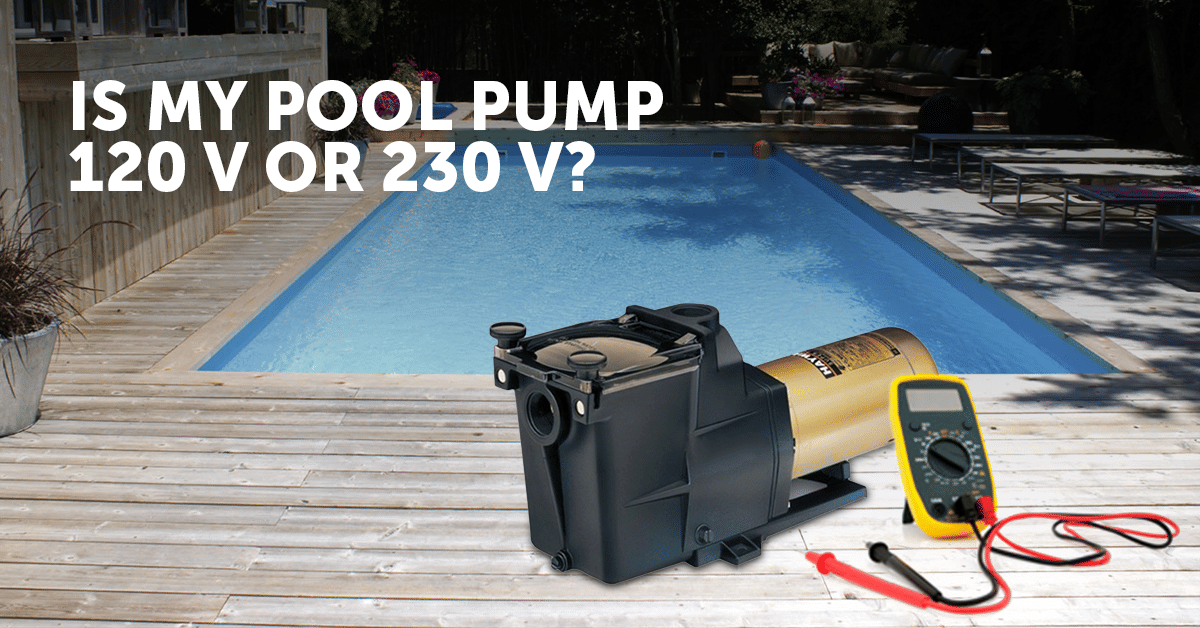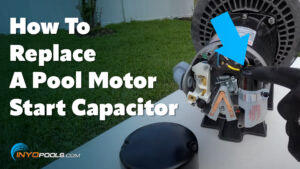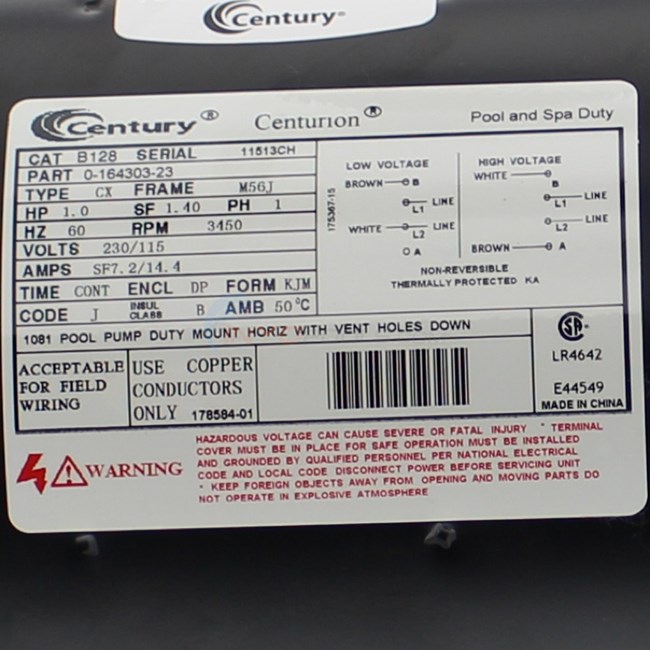One of the trickiest questions we hear over the phone is, “Is my pool pump 115V or 230V?” To be honest, that’s something we cannot tell you. However, there are a few things that you can do on your end.
In this article, we explain how pool owners can discern which voltage they are running in their pool and also share which tools they can use to test.
Is My Pool Pump 115V or 230V?
Although it seems like basic pool information (in comparison to pool chemistry), many pool owners do not know what voltage they are using in their pool area. Sure, you may not need it the first few months of operating your pool, but at some point, you will.
Whether you are replacing your pump, upgrading your motor, or replacing your pool light bulb, at some point, you will absolutely need to know if you have 115V or 230V.
Your Pump Motor Label
One of the first places where pool owners want to look to determine their voltage is the motor label. Yes, the label on your motor lists the voltage. However, that is the voltage for the motor, not necessarily your pool. Let us explain.
Manufacturers make motors 115V, 230V, or 115/ 230V.
So, if your motor lists one specific voltage, it’s safe to go with that. However, if you have a dual speed motor, one compatible with both 115V AND 230V, then you’re back to square one. Of course, there are other ways you can determine which voltage you are using.
If you cannot determine your voltage using the motor label alone, then you will have to test the voltage output or review the wiring on the pump.
How to Test Your Pump Voltage
The only way to be absolutely certain which voltage you have is to test it using a voltmeter or multimeter. However, we definitely understand if you do not have one of these just laying around somewhere. I, for one, do not. Still, for the future, a meter is a handy tool we recommend every pool owner should have.
Should you purchase a voltmeter or a multimeter and how do they differ? Voltage meters, or voltmeters, and multimeters have some similarities and a few differences.
Voltage Meters

Pool owners use voltmeters, or voltage meters, to measure the electric potential difference between two points in an electric circuit.
It checks for AC or DC voltages, resistance, and continuity of electrical components. In short, it checks your voltage.
To operate a voltmeter, arrange the leads so that the “jaws” will encircle one of the leads. Set the meter on maximum amp scale, encircle the jaws around one lead and take a reading. It may be necessary to reset to a lower scale.
** CAUTION: All wires are live (hot), so use extreme care!
The voltage reading should be within 10% of the voltage. For example, if the voltmeter reads between 207 and 253 volts, then you know you have a 230V motor.
Multimeters
 Unlike voltmeters, multimeters test a variety of measurements using a single device.
Unlike voltmeters, multimeters test a variety of measurements using a single device.
For example, a basic multimeter consists of volt-ampere-ohm testers that measure current, voltage, and resistance. However, they can also be more complex and display temperature, frequency, inductance, capacitance, and relative humidity.
Basic multimeters work similarly to voltmeters. Typically, there is a dial on the multimeter that allows you to choose the parameters and ranges you want to measure for. Because it can perform more functions, multimeters are more expensive than voltmeters.
If you are installing a new pool pump or troubleshooting a failing pump, you want to measure the motors supply voltage, its running amperage, and its line continuity.
For a how-to guide on how to use a multimeter, click here.
Other Ways to Check Voltage?
The Breaker
Another area you can verify your system’s voltage is the breaker. In most cases, if the pump is fed from a double breaker, it should be 230V. Notice the words, “in most cases” and “should be.” There is a myriad of different configurations a pool owner can do at their breaker box. and you’d be surprised at the configurations people find existing equipment. However, a voltmeter removes all doubt.
Still, if intact, there should be a label on the breaker that identifies the voltage, brand name, amperage, UL sticker, etc. If available, you can use this to determine the voltage you’re running.
Pump Wiring
In a perfect pool world, you can walk out to your pool and determine which voltage you are using with the help of the pump’s wiring or the wires’ colors. Unfortunately, we do not live in a perfect world, let alone pool world. It is extremely difficult and risky to make a conjecture based on wiring alone.
For example, a 230V, single speed pump requires three wires (two hot and one ground). White is never a hot wire unless someone improperly installed your wiring, which could be very dangerous. However, because there isn’t a way to verify, it’s best to purchase your own meter or simply call an electrician to come out and test.
We write all of this to reinforce the importance of verifying your voltage as opposed to guessing. If for whatever reason you cannot read your motor label or you are questioning the voltage, either test it yourself using a meter or have an electrician come out. Once you have figured it out, you won’t ever forget.













Leave a Reply